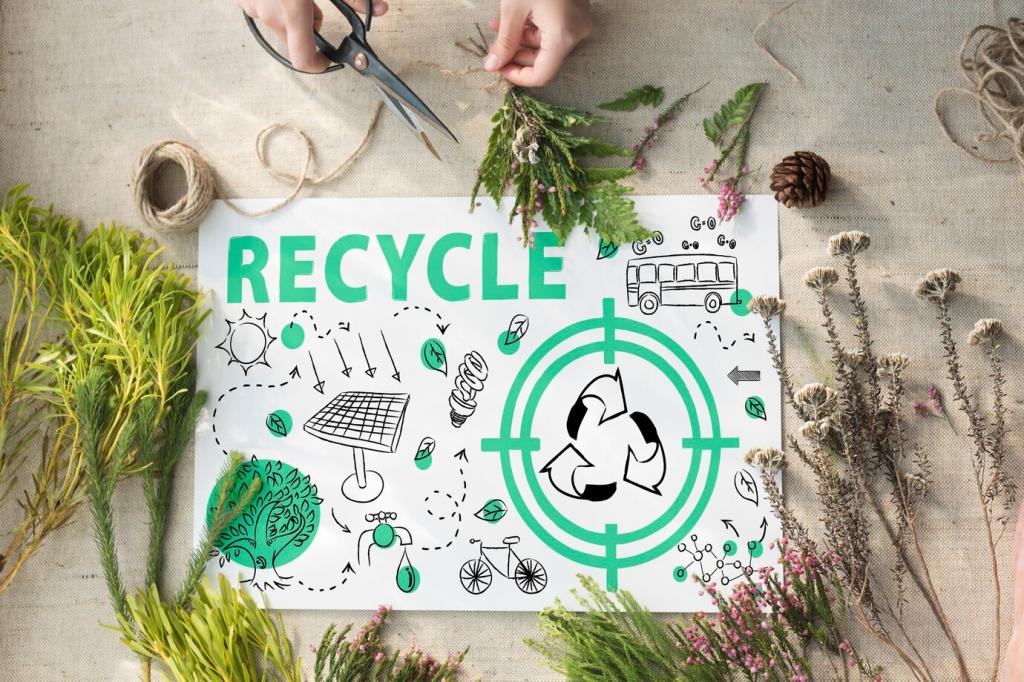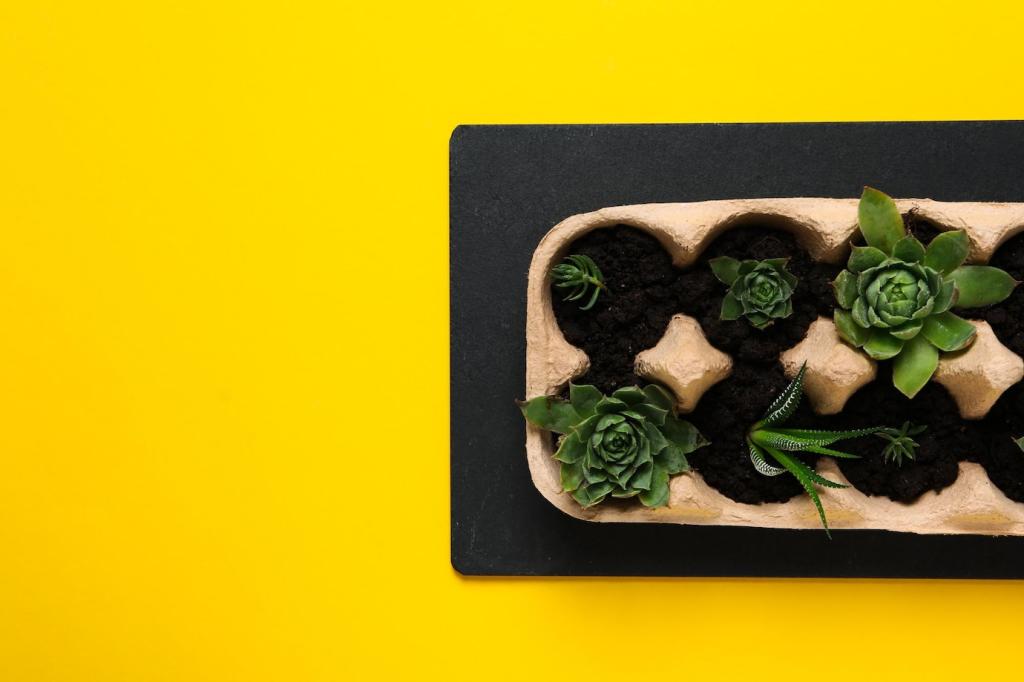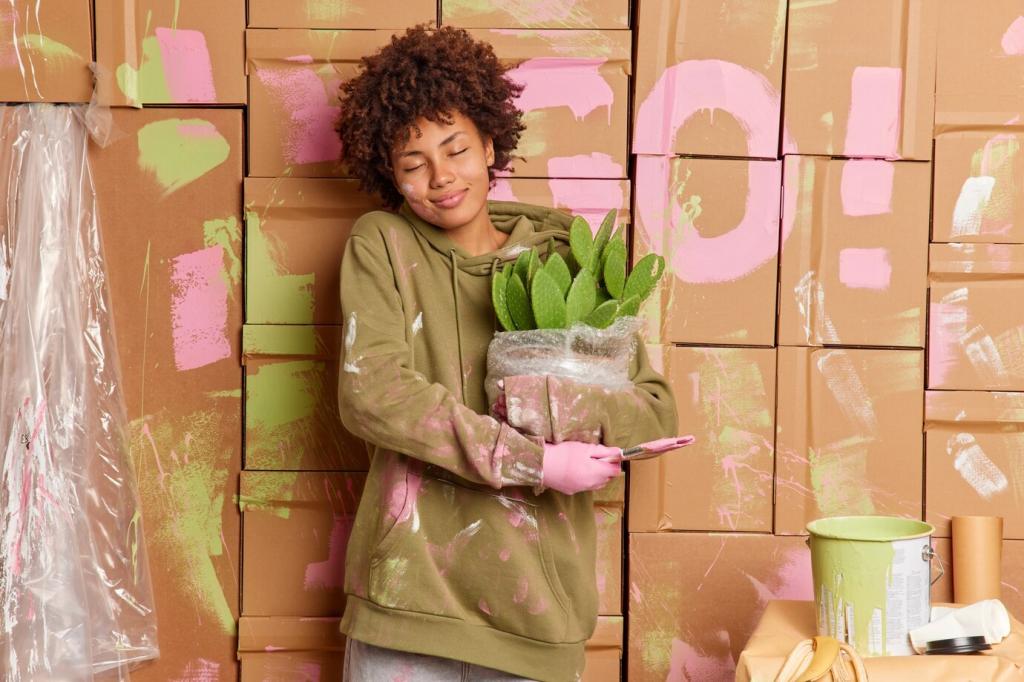Sustainable Living: Transforming Waste into Artful Decor
Embracing sustainable living is not just about reducing waste—it’s also about finding innovative ways to give discarded materials new purpose. One of the most creative and rewarding approaches is transforming everyday waste into beautiful, functional decor pieces. This practice blends environmental responsibility with personal expression, turning what was once considered rubbish into treasures that enrich our living spaces. By integrating waste materials into our home aesthetics, we not only minimize our ecological footprint but also foster a culture of mindful consumption and artistic innovation.

The Beauty of Upcycled Materials
Transforming Glass into Gleaming Accents
Glass bottles and jars often accumulate in our kitchens, destined for recycling or worse, landfills. However, with a little ingenuity, they can become dazzling decorative pieces. By cleaning and reshaping glass containers, adding paint, etching patterns, or fitting them with lights, these ordinary items gain a second life as vases, lanterns, or centerpieces. Each piece carries its own subtle history, marks, or tints, which contribute to its uniqueness. Using reclaimed glass not only enlivens spaces but also serves as a constant reminder of the value in what we often discard. The process itself fosters creativity and mindfulness, urging us to reconsider the potential of everyday items.
Reimagining Textiles for Cozy Elegance
Old curtains, shirts, and fabric scraps often pile up, overlooked and unused. Yet, these textiles can be transformed into plush pillows, eye-catching wall hangings, or intricate patchwork throws. The reworking of textiles involves sorting, cleaning, and sometimes dyeing, which adds another layer of personalization to the resulting decor. Each repurposed piece showcases not just resourcefulness, but also carries sentimental value—perhaps a favorite shirt becomes a cherished cushion. The result is a home infused with warmth and individuality, offering tactile comfort and a visual reminder of cherished memories saved from waste.
Creative Woodwork from Discarded Lumber
Unwanted pallets, broken furniture, and leftover timber often clutter garages and workshops, but with vision and basic carpentry tools, these materials can be reborn. Salvaged wood might become rustic shelves, quirky picture frames, or custom coffee tables, each marked by the patina of age. Working with reclaimed wood offers the satisfaction of craftsmanship while reducing demand for new resources. The imperfections and old nail holes become elements of charm, infusing any room with a sense of history and sustainability. This approach brings both functional artistry and tangible environmental impact into daily living.


Found Object Sculptures for Statement Pieces
Sculptures crafted from everyday waste—such as metal scraps, plastic, or broken electronics—amplify the message of transformation. By assembling and manipulating these materials, artists and hobbyists create striking figures or abstract designs that capture attention and spark conversations. These statement pieces highlight the possibilities lying within what we throw away, forcing viewers to reevaluate their own consumption habits. The prominence of such sculptures in a home or garden not only adds visual impact but also serves as a commitment to creativity and planetary well-being.

Mosaics That Reimagine Fragments
Broken ceramics, tiles, or glass shards, typically seen as unsalvageable, can find new life in intricate mosaics. Piecing these fragments together in colorful patterns allows for a unique statement art piece or functional decor, like tabletops and mirror frames. The continuous process of sorting and fitting the pieces encourages mindfulness and patience, while the end result embodies resilience and adaptability. Each mosaic tells a story—of former objects given renewed beauty—serving as both a personal expression and a testament to sustainability.
Crafting a Culture of Sustainability at Home
Inspiring Family and Friends to Participate
Getting others involved in waste-to-art projects can multiply their positive impact. Shared crafting sessions or collaborative decor projects transform sustainability into a social, educational, and bonding experience. Children learn firsthand the power of resourcefulness, while adults might discover new creative abilities or perspectives. Together, households create unique, memory-filled decor that reflects their shared commitment to the environment. This communal effort can ripple outward, encouraging visitors to rethink their own habits and adopt more sustainable practices in their homes.
Mindful Consumption and Material Choices
Adopting the mindset of viewing items for their full potential encourages thoughtful decision-making when purchasing new products. Awareness of materials, manufacturing processes, and recyclability influences how we furnish and decorate our homes. Choosing durable goods, seeking out secondhand items, or selecting materials with minimal environmental impact reduces the burden on natural resources. This conscious approach to consumption helps to close the loop—ensuring that the cycle of creation, use, and transformation remains as gentle to the planet as possible.
Showcasing Eco-Friendly Innovations
Displaying decor made from repurposed waste sends a clear message about the importance of sustainability. The visibility of such choices acts as advocacy, demonstrating the elegance and feasibility of eco-friendly alternatives. Hosting gatherings or sharing stories behind each piece can inspire conversations about environmental responsibility. Over time, these efforts contribute to a growing culture of sustainability, where creativity and care for the earth are celebrated in every room.
